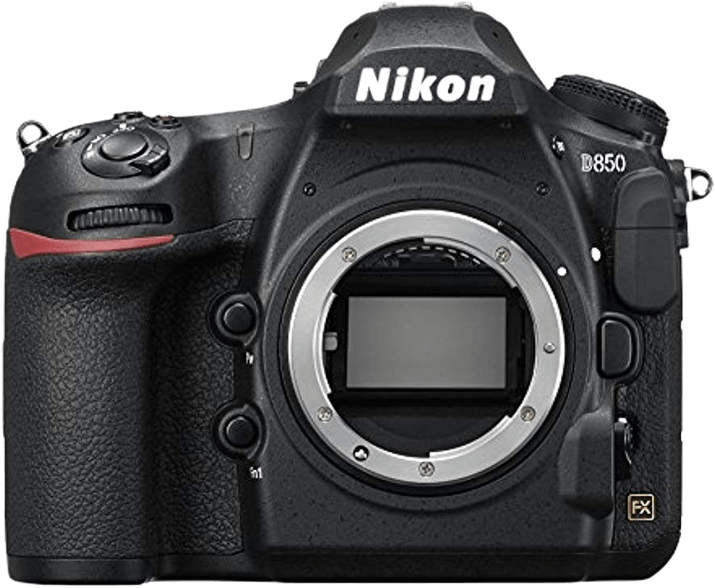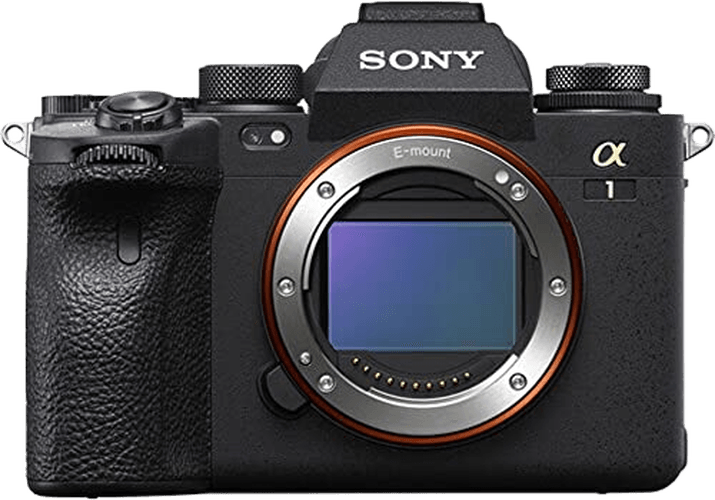Nikon D850 vs Sony a1 Comparison
Nikon D850

Sony a1

The Sony a1 takes the lead with a score of 86/100, while the Nikon D850 trails behind at 82/100. Both cameras share similar features, such as their announcement in the 2010s and their high launch prices. However, the Sony a1, a mirrorless camera, boasts a more compact size at 129 x 97 x 81mm and a lighter weight of 737g, making it easier to handle and carry.
On the other hand, the Nikon D850, a DSLR, was released in 2017 and has a lower launch price of $3300. Although it is larger (146 x 124 x 79mm) and heavier (1005g), some photographers may prefer the DSLR format and appreciate the lower cost.
Considering the scores and specifications, the Sony a1 stands out as the better camera. However, the Nikon D850 may still be a suitable option for those who prefer DSLRs and are looking for a more affordable choice.
Nikon D850 vs Sony a1 Overview and Optics
The Sony a1 outperforms the Nikon D850 in optics, scoring 89/100 compared to the D850’s 79/100. Both cameras share some common specifications such as CMOS sensor type, full-frame sensor size, and similar lens mounts (Sony FE and Nikon F FX). However, the Sony a1 surpasses the Nikon D850 in certain aspects, while the D850 has its own advantages.
The Sony a1 boasts a higher megapixel count at 50.1, compared to the D850’s 45.7, allowing for more detailed images. Additionally, the a1 has a significantly faster shooting speed of 30, while the D850 only reaches 7. The Sony a1 also features a dual Bionz XR processor, which contributes to its faster shooting speed and overall performance. Another advantage of the a1 is the presence of image stabilization, a feature lacking in the D850.
On the other hand, the Nikon D850 has a DXOMARK score of 100 for its sensor, slightly higher than the Sony a1’s score of 98. This indicates a potentially better overall image quality. The D850 also uses an Expeed 5 processor, which, while not as advanced as the a1’s dual Bionz XR, still provides reliable performance.
In comparing the optics of these cameras, the Sony a1 emerges as the superior choice due to its higher megapixel count, faster shooting speed, advanced processor, and image stabilization. However, the Nikon D850 still holds its own with a slightly higher DXOMARK sensor score and a dependable Expeed 5 processor. Ultimately, the choice between these two cameras depends on the specific needs and preferences of the photographer.
Nikon D850 vs Sony a1 Video Performance
When comparing the video capabilities of the Nikon D850 and the Sony a1, the Sony a1 emerges as the winner with a video score of 86/100, a 16-point lead over the Nikon D850’s score of 70/100. Both cameras share some common video specifications, such as having 4K video resolution and built-in time-lapse functionality. However, the Sony a1 outperforms the Nikon D850 in several aspects, while the Nikon D850 has its own advantages.
The Sony a1 boasts an impressive 8K maximum video resolution, which is double that of the Nikon D850’s 4K. This results in significantly higher video quality and detail. Additionally, the Sony a1 offers a maximum video dimension of 7680 x 4320, which is also twice the size of the Nikon D850’s 3840 x 2160. Furthermore, the Sony a1 excels in video frame rate, reaching up to 120fps, while the Nikon D850 is limited to 30fps. This makes the Sony a1 ideal for capturing fast-paced action and producing smooth slow-motion footage.
On the other hand, the Nikon D850 has the advantage of built-in time-lapse functionality, unlike the Sony a1. This feature allows photographers to create time-lapse videos directly in the camera without the need for additional software or equipment.
Taking these factors into consideration, the Sony a1 clearly outshines the Nikon D850 in terms of video resolution, dimensions, and frame rate, making it the superior choice for videographers seeking the highest quality footage. However, the Nikon D850’s built-in time-lapse functionality may appeal to those who prioritize this feature in their work. Ultimately, the choice between these cameras will depend on the specific video requirements and preferences of the user.
Nikon D850 vs Sony a1 Features and Benefits
The Nikon D850 emerges as the winner in the features comparison with a score of 87/100, while the Sony a1 scores 83/100. Both cameras share several specifications, including touchscreen functionality, WiFi, and Bluetooth connectivity. Neither camera has GPS capabilities.
The Nikon D850 outshines the Sony a1 in screen size and resolution. Its 3.2-inch screen is larger than the Sony a1’s 3-inch screen, providing a more comfortable viewing experience. Moreover, the D850 boasts a higher screen resolution of 2,359,000 dots compared to the Sony a1’s 1,440,000 dots. This difference results in a sharper and clearer display on the Nikon D850, allowing photographers to better review and edit their images.
On the other hand, the Sony a1 has an advantage over the Nikon D850 with its flip screen feature. This enables photographers to shoot from various angles with ease, which is not possible with the D850’s fixed screen. However, this single advantage does not outweigh the benefits offered by the Nikon D850 in terms of screen size and resolution.
Evaluating both cameras, the Nikon D850 proves to be superior in features due to its larger screen and higher resolution. This enhances the overall user experience, making it a better choice for photographers who prioritize display quality. Meanwhile, the Sony a1’s flip screen offers flexibility in shooting angles, which may appeal to some users. However, this advantage alone does not make it the better camera when compared to the Nikon D850.
Nikon D850 vs Sony a1 Storage and Battery
The Nikon D850 outperforms the Sony a1 in storage and battery with a score of 84/100, while the Sony a1 scores 73/100. Both cameras have two memory card slots and are compatible with UHS-II SD cards. The Nikon D850 accepts SD/SDHC/SDXC and XQD cards, while the Sony a1 accepts SD and CFexpress Type A cards.
The Nikon D850’s battery life is significantly longer, providing 1840 shots per charge, compared to the Sony a1’s 530 shots. This advantage makes the Nikon D850 more suitable for extended shooting sessions. However, the Sony a1 offers USB charging, which can be convenient for on-the-go charging or when a dedicated charger is unavailable.
Despite its lower score, the Sony a1’s USB charging capability is a valuable feature, especially for photographers who need quick and easy charging options. Nevertheless, the Nikon D850’s superior battery life and storage options make it the better choice for those prioritizing longer shooting sessions and versatile storage solutions.
Alternatives to the Nikon D850 and Sony a1
Are you still undecided about which camera is right for you? Have a look at these popular comparisons that feature the Nikon D850 or the Sony a1:

